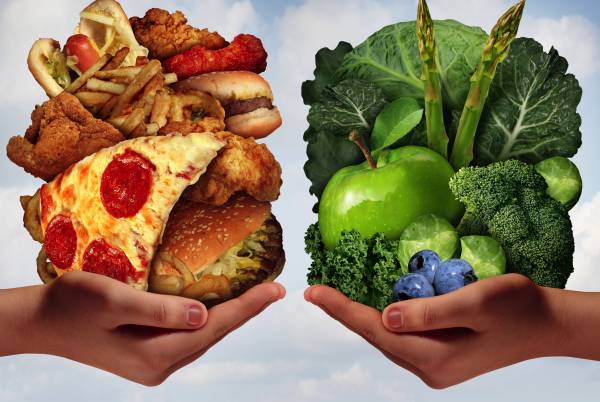Dan John’s new book, Can You Go, is his best work yet on the art and science of coaching. On page 69 of that book, he included a graphic of mine that I use to explain the big picture of nutrition change:
The graphic was accompanied by the following words:
Move to the right, as far as you need. Your perfect place is a blend of health, lifestyle, and values.
Out there on the far right, at the tip of the arrow, is diet perfection. Forget it. Choose more salads and vegetables, but don’t try to be faultless. When it comes to diet and nutrition, especially in terms of caloric restriction, doing more, better, is where things work best.
Less candy. More veggies.
I thought it would helpful to expand on this concept and help provide clarity on how to assess where you are, where you are going, and how to progress through the years. You don’t have to have read Dan John’s book for this information to be helpful.
How the Graph Works
One of the biggest issues we face today is the daily flood of nutrition information. And even once you decide whether the advice is legit or not, you still need to figure out if it is worth adding into your routine.
“How well you move across the graph and how far you should go depends on knowing exactly what you want.”
On the left of my graphic, we have people with poor habits, but more importantly, these are people who are likely discouraged or confused. They have wanted to change, but have been sold hardcore fitness when all they needed was a positive nudge in the right direction.
On the other end, some reasons we may need to be to the extreme right of my chart include an elimination diet, disease, or competitive body composition goals.
In the middle, we have a reasonable, flexible plan that will allow for family gatherings, vacation, and a way of eating that aligns with your lifestyle and values. Sounds basic, but I really use this graph as an assessment tool.

How I Use This Tool
To go further with this graph, there are certain zones I use when meeting with a client for the first time. There is nothing scientific or rigid about my approach. It’s just a mindset of where the coaching may start. You can use this to evaluate where you are at and what you might change.

Zone A
Everything works. Any change you make will have a big impact. If you are in this group, then my go-to advice for you includes things like drinking more water, adding protein to each meal, slowly adding vegetables, and keeping a consistent meal schedule. The big thing for you is that little victories need to happen. Otherwise, you’ll be back in the same old cycle of starting and failing. Too often people in Zone A get sold on programs to take them straight to point C. Instead, let’s start with a glass of water in the morning.
Zone B
This should be autopilot for the most part. You are what your habits are. You can do things like macros and food journaling, but it isn’t necessary. You can go to family gatherings and eat the dishes you grew up on, travel and be reasonable, and have an overall healthy relationship with food. Your values should be reflected in what you eat (as far as your religion, feelings on animal treatment, concern for the environment, etc.). Whenever a client of mine proposes a nutritional change, I ask whether he or she can sustain that behavior for five years. Habits that garner a “yes” answer fall under Zone B.
Zone C
This is diet perfection or close to it. Most people can only do this for about two to ten weeks a year, and usually not all of that in one chunk of time. Being in Zone C could be the result a lot of things, from dieting before vacation, to religious practices, to preparing for competition.

Get Clear on What You Want
Of course, this all makes sense, but what is the takeaway? There is one big secret to success with health and body composition goals. Let me describe the secret by using a client example.
I have been working with this client over a four-year period. When we met, he was 35lbs overweight, on blood pressure and cholesterol medication, and had a Malibu Pilates machine with a nice layer of dust on it that collected soon after purchase from an infomercial. Fast-forward to today, and this client is a sixty-year-old who could be sporting a six-pack with maybe four weeks of prep. No more medications. No more Malibu Pilates. Just some serious strength and stamina.
“His newfound healthy relationship with food allowed him to be on autopilot most of the time, and just be reasonable in certain situations. The result? Less thinking, more living.”
Although that is all great, it’s not what I am actually proud of him for. Before we worked together, he was what Dan John would call “dazed and confused.” He didn’t know where he wanted to go, just that it wasn’t where he was.
We started with basic habits like ditching the microwave meals, making more home-cooked meals, writing down what he ate, cutting back on bonbons, and drinking more water. Once the weight was off and the doctor took him off medication, we started tweaking smaller things until we got to the point where his health, lifestyle, and values were all in harmony. His newfound healthy relationship with food allowed him to be on autopilot most of the time, and just be reasonable in certain situations. The result? Less thinking, more living.
A little while ago, this client visited me in Salt Lake City – and we climbed a mountain. Four years ago, this would have just been a dream. And while he is truly four weeks out from a six-pack, in reality, we are never going to take him there. He doesn’t value that six-pack. Climbing a mountain was far more amazing for him.
I’m not knocking any one goal over another. What I am saying is that this client now has clarity of what he wants out of life. That’s the secret to every health and aesthetic goal there is. Most people say what others want to hear or try to achieve what they think they should want. The secret is to get clear on what you want.

Success Is Clarity
People always praise Dan John’s work for making complex things simple. He hates this, and of course, we bring it up daily to him. However, he’s right to disagree. His work is all about how to find clarity, which is far deeper than making things simpler.
How well you move across the graph and how far you should go depends on knowing exactly what you want. Your ability to filter advice and information and either add it to your routine or not comes down to answering some basic questions:
- Does this change fit my lifestyle?
- Does it align with my beliefs and values?
- Can I do this for five years?
- If I do this for five years, will it make me better?
If you can answer “yes “to all of these questions, do whatever it is you were contemplating. The answers can change over time, so re-ask them about your habits every so often. People on the A or C ends need to think about longevity. But, to me, being in Zone B means you have total clarity, and that is my definition of success.
More Like This:
- Do the Math to Make the Most of Micronutrients
- What If We Thought About Movement Like Nutrition?
- 7 Habits to Success: How to Achieve Your Nutritional Goals
- New on Pulse Beat Fit Today
Photos courtesy of Shutterstock.






